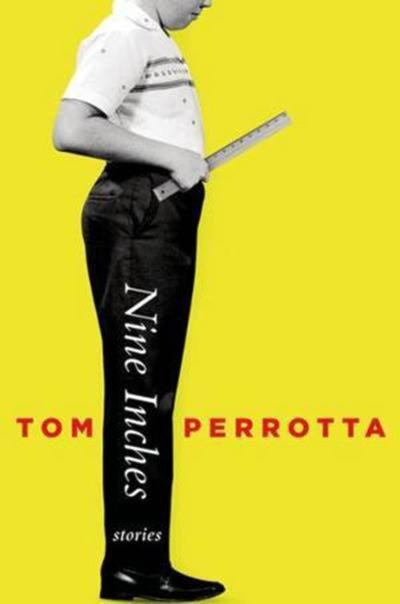In the title story of this new collection by author Tom Perrotta (Election, Little Children), a rule is implemented at a middle school dance requiring the kids’ bodies to be at least nine inches apart while dancing together (enforced, if necessary, by rulers). This is disobeyed, of course, and – as in the rest of the stories on offer here – this small, admittedly innocent violation acts as a sort of loose, ephemeral metaphor for its adult counterpart. In this particular case it’s a marriage, as central character Ethan struggles with his enchantment toward a fellow teacher; in another, it’s a little league umpire’s restraining order against his own son; a pizza delivery boy’s failed admittance to myriad colleges; a senior woman’s struggle to reconcile things past and present.
The lives featured in Nine Inches are lives at a point of transience. The stories locate each character just as they’re approaching some kind of professional, familial, or romantic yellow light, and must weigh the risks versus the rewards of running it. As a basis for dramatic tension, this works well enough; it also provides the separate parts of the book their implied sum, in addition to the soft-spoken narration and the entrenchment in suburbia.
Despite these similarities, however, readers’ mileage will likely vary from story to story. The individual success of each one seems to depend on how well it works within the book’s largely formulaic approach to narrative. The opener of the collection, “Backrub”, is the strongest for this reason, as it not only adheres to those boundaries but pushes against them. Here we have a protagonist, Donald, whose inner crisis of ambivalence has materialized: the reality of a minimum wage dead-end as high-school peers depart to places of higher-learning (and, Donald supposes, higher futures) is somehow underlined by the professional misconduct Lt. Finnegan directs at him – backrubs not being the full extent of it. And because Perrotta is compassionate toward his characters’ imperfections, be they victim or violator, this bizarre scenario is at once serious and silly, uncomfortable – but enjoyably so. Though, again, the surrounding formula fares better here than in its companion pieces.
And it is very much a formula. It only takes two, perhaps three stories to see the structural outline appear, as if Perrotta had sketched it right onto the page. This isn’t to say the formula is always linear, but that the components recycle themselves. In each of the ten stories, for example, there will inevitably roll into the narrative a boulder of exposition whose purpose it is to make absolute sure the reader knows the occasion of the piece, the nuances of characters both major and minor, as well as their respective and collective histories. Sometimes this information is broken up throughout and sometimes it appears whole midway through, bulky and awkward, taking over entire, consecutive pages. But regardless how it’s done, the transitions into these backdrops feel, at all times, overt. The author seems to have a compulsion to leave no stone uncovered, and the cost of this exercise can often be reader engagement.
Nine Inches’ problems frequently circle back on themselves. Whether or not its workaday vibe appeals to you, the characters are as easily forgotten as they are recognized. The stakes of each narrative too often hit a ceiling of mere relatability, and suffice it to say the personalities here do nothing to raise them. Add to this a writing style that is overly tranquil and you have a collection you’ll want to read only in bursts. And putting it aside, whether temporarily or for good, the feeling is actually quite comparable to running a yellow light – or defying a school dance formality. It’s just not that big of a deal.
By Kylan Knowler
arts@mondaymag.com
